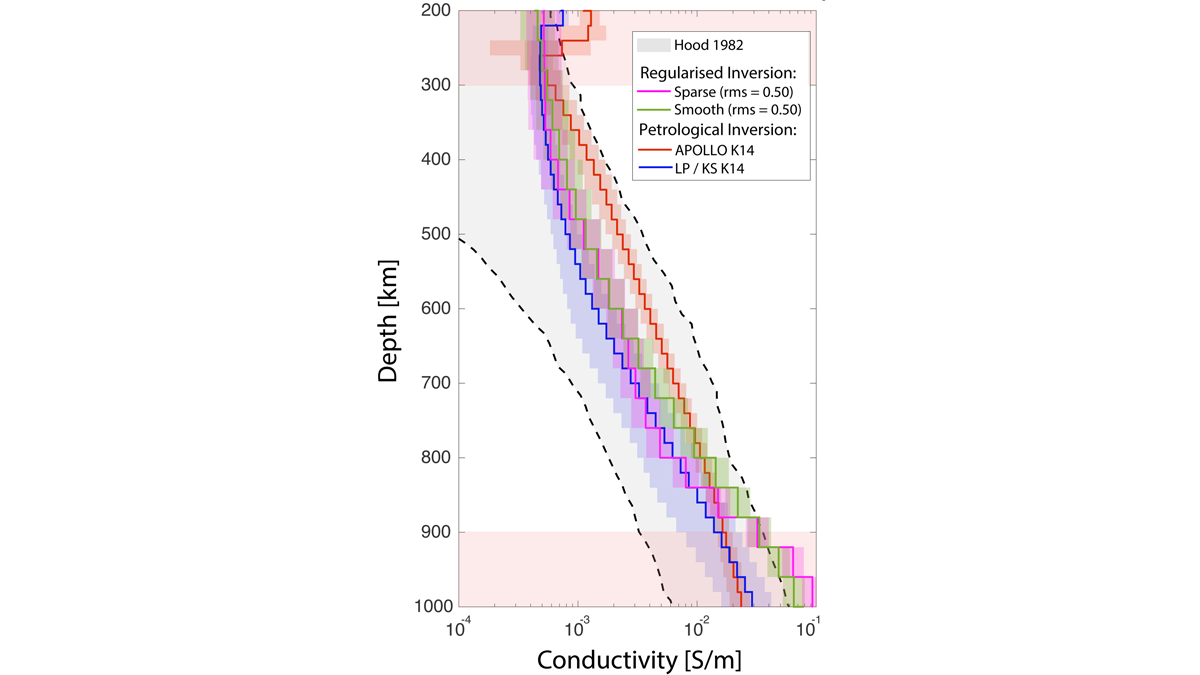Editors’ Highlights are summaries of recent papers by AGU’s journal editors.
Source: Journal of Geophysical Research: Planets
In the absence of direct samples, geophysical techniques provide the best constraints on the structure of planetary interiors. Mittelholz et al. [2021] focus on how electrical conductivity varies with depth between 200 and 900 kilometers inside the Moon. Although relevant measurements have been available since the Apollo missions, this work presents the first global inversion of electrical conductivity. This was made possible thanks to the realization that the external magnetic field has a simple structure when a spacecraft is in the geomagnetic tail of the Earth.
The authors use data from the Kaguya and Lunar Prospector orbiter spacecrafts without needing a tie to surface measurements. They find that the global electrical conductivity could be somewhat less than beneath the Apollo 12 landing site, but the difference is not robust. The absence of significant differences between the local structure beneath Apollo 12 and the global inversions implies that the unique character of the geological setting of Apollo 12, in Oceanus Procellarum, may be restricted to depths less than 300 kilometers. However, it is unlikely that the Moon is perfectly uniform in that depth range.
Data from upcoming missions such as the Lunar Magnetotelluric Sounder (LMS), scheduled to be launched in 2023 as part of NASA’s Artemis program, will be important to better understand the lunar interior.
Citation: Mittelholz, A., Grayver, A., Khan, A., & Kuvshinov, A. [2021]. The global conductivity structure of the lunar upper and midmantle. Journal of Geophysical Research: Planets, 126, e2021JE006980. https://doi.org/10.1029/2021JE006980
―Laurent G. J. Montesi, Editor-in-Chief, JGR: Planets

